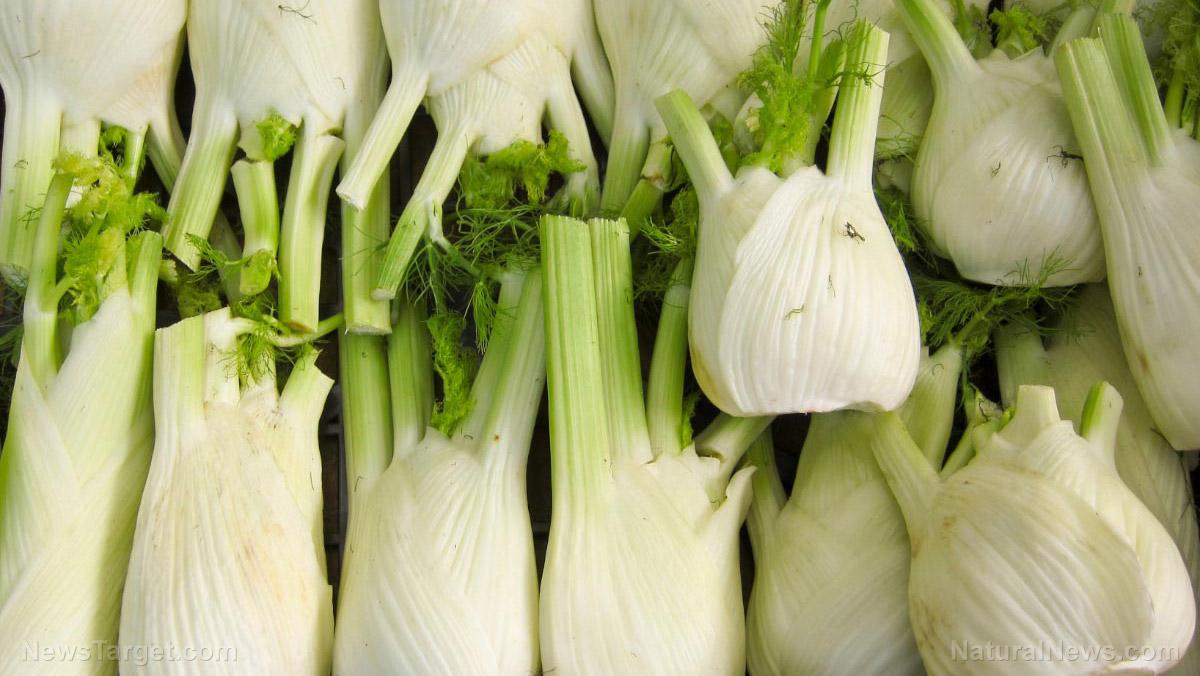
Fennel, which is native to the Mediterranean, has a rich history that can be traced back to ancient Egypt, Greece and Rome, where it was used medicinally and symbolically. Fennel has since spread globally, thriving in diverse climates.
Fennel is rich in phytonutrients like anethole, flavonoids, fiber, vitamin C, potassium and manganese, which contribute to its anti-inflammatory, antimicrobial, and antioxidant properties.
Known for improving digestive health, reducing inflammation, supporting respiratory function, balancing hormones, and aiding in weight management, fennel is a versatile herb with a range of health benefits.
All parts of the fennel plant (bulb, leaves, seeds) are edible and can be used in various dishes, from roasted side dishes to salads and teas, adding a sweet, licorice-like flavor to meals.
Fennel is known by different names across cultures, such as saunf in Hindi and fenouil in French, and is characterized by its feathery leaves, yellow flowers and sweet, anise-like flavor, making it a popular ingredient and medicinal herb worldwide.
Fennel (Foeniculum vulgare), a fragrant and versatile herb, has been revered for centuries for its culinary, medicinal and aromatic properties. This hardy perennial, with its feathery leaves and bright yellow flowers, belongs to the carrot family and is native to the Mediterranean region.
Over time, it has spread across the globe, thriving in dry, coastal soils and riverbanks. Fennel’s unique flavor, impressive nutrient profile and therapeutic benefits make it a standout among superfoods.
Brief history of fennel
Fennel’s history is as rich as its flavor. The herb has been cultivated since ancient times, with records of its use dating back to ancient Egypt, Greece and Rome. The Greeks called it marathon, a name derived from the Battle of Marathon, which was fought on a field of fennel.
In medieval Europe, fennel was hung over doorways to ward off evil spirits and was believed to bring courage and strength. It was also a staple in Traditional Chinese and Ayurvedic Medicine, where it was used to treat digestive issues, respiratory ailments and even snakebites.
Today, fennel is grown worldwide, with major producers including India, China and the Mediterranean countries. Its adaptability to various climates and soils has made it a global favorite, both in the kitchen and the medicine cabinet.
Phytonutrients in fennel
Fennel is a nutritional powerhouse, packed with phytonutrients that contribute to its health benefits. Key compounds include:
Anethole – The primary component of fennel’s essential oil, anethole, has anti-inflammatory, antimicrobial and anticancer properties.
Flavonoids – Quercetin and kaempferol are potent antioxidants that help combat oxidative stress and inflammation.
Fiber – Fennel is rich in dietary fiber, which supports digestive health and helps regulate blood sugar levels.
Vitamins and minerals: Fennel is an excellent source of vitamin C, potassium and manganese, all of which play vital roles in maintaining overall health.
Health benefits of fennel
Fennel’s therapeutic properties have been recognized for centuries, and modern science continues to uncover its potential to prevent and alleviate various conditions. Here are some of the most notable health benefits:
Digestive health – Fennel is perhaps best known for its ability to soothe digestive issues. Its carminative properties help relieve bloating, gas and indigestion. Fennel tea, made from crushed seeds, is a popular remedy for stomach discomfort.
Antioxidant and anti-inflammatory effects – The flavonoids and anethole in fennel help reduce inflammation and protect cells from damage caused by free radicals. This makes fennel a potential ally in preventing chronic diseases such as heart disease and cancer.
Respiratory health – Fennel has been used traditionally to treat respiratory conditions like coughs, bronchitis, and asthma. Its expectorant properties help clear mucus from the airways, making breathing easier.
Hormonal balance – Fennel contains phytoestrogens, which may help regulate hormonal imbalances in women. It has been used to alleviate symptoms of menopause and menstrual discomfort.
Weight management – Low in calories but high in fiber, fennel can promote satiety and aid in weight management. Its diuretic properties also help reduce water retention.
Culinary and medicinal uses
Fennel’s versatility extends beyond its medicinal uses. Its bulb, leaves and seeds are all edible and can be incorporated into a variety of dishes. The bulb has a crisp texture and a mild, sweet flavor reminiscent of licorice, while the seeds are more pungent and aromatic. Fennel’s feathery fronds are often used as a garnish or herb.
In the kitchen, fennel can be roasted, sautéed or eaten raw in salads. It pairs well with citrus, fish and root vegetables. Some popular recipes featuring fennel include:
Roasted fennel with parmesan – A simple yet flavorful side dish that highlights fennel’s natural sweetness.
Fennel and orange salad – A refreshing combination of citrus and fennel, perfect for a light lunch or starter.
Fennel seed bread – A rustic loaf infused with the aromatic flavor of fennel seeds.
Fennel tea – A soothing beverage made by steeping crushed fennel seeds in hot water.
Fennel is known by various names across cultures, reflecting its widespread use and popularity. Some common names include: Saunf (Hindi), Fenouil (French), Hinojo (Spanish) and Xiao Hui Xiang (Chinese).
The plant itself is characterized by its tall, hollow stems, feathery green leaves and umbrella-like clusters of yellow flowers. The bulb, which is the most commonly consumed part, is pale green or white and has a layered, onion-like structure. Fennel’s flavor is sweet and slightly spicy, with a distinct anise-like aroma.
Fennel is a testament to the enduring power of nature’s remedies. From its ancient origins to its modern-day applications, this humble herb continues to captivate with its flavor, fragrance and health-supporting properties.
Whether enjoyed in a hearty meal or sipped as a soothing tea, fennel offers a wealth of benefits for both the mind and body. As research into its phytonutrients and health effects continues, fennel’s status as a superfood is only set to grow.
The next time you encounter this versatile herb, consider adding it to your diet — it might just be the boost your wellness routine needs.
https://nexusnewsfeed.com/article/food-cooking/fennel-from-ancient-herb-to-modern-superfood-powerhouse/








